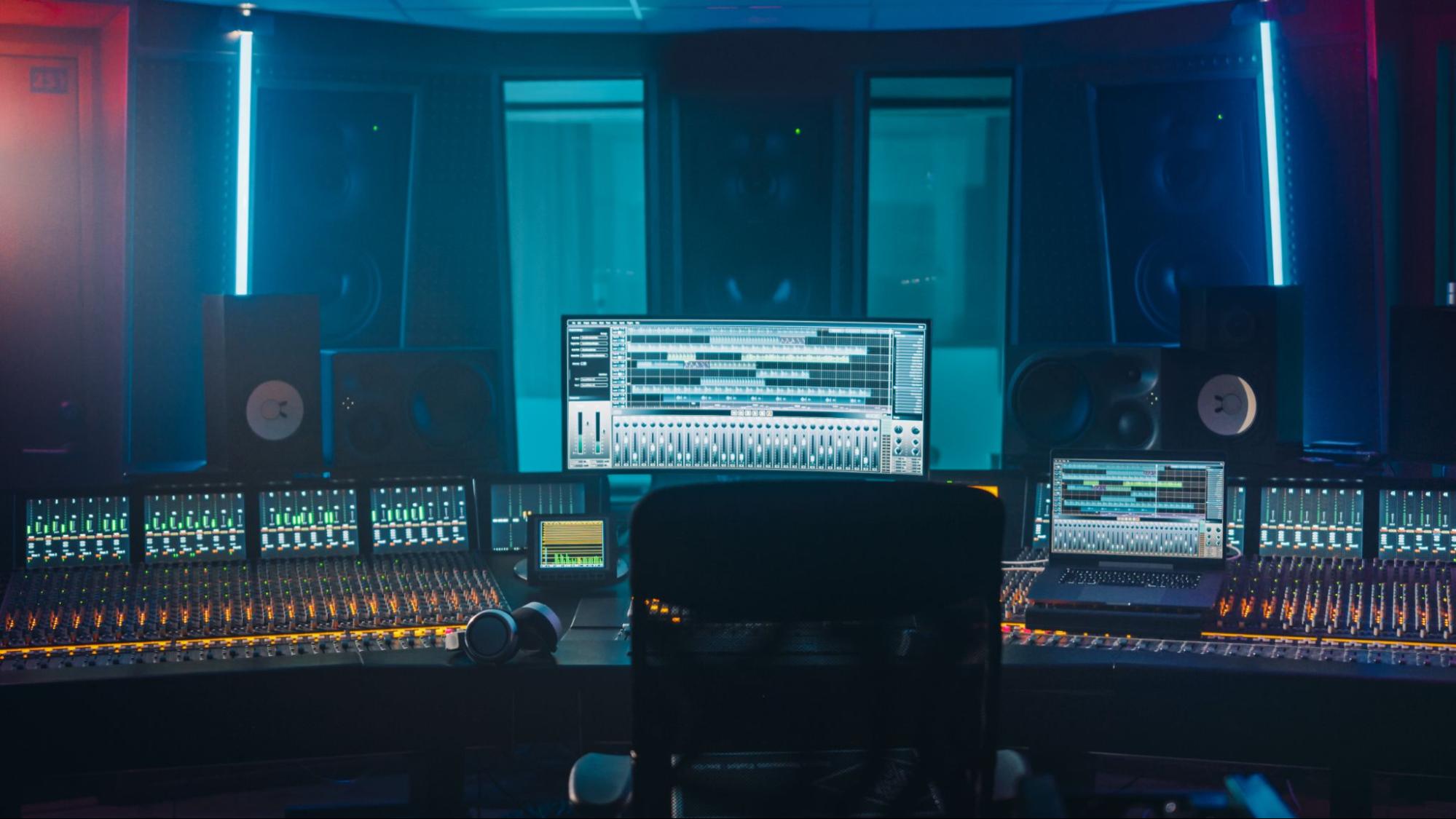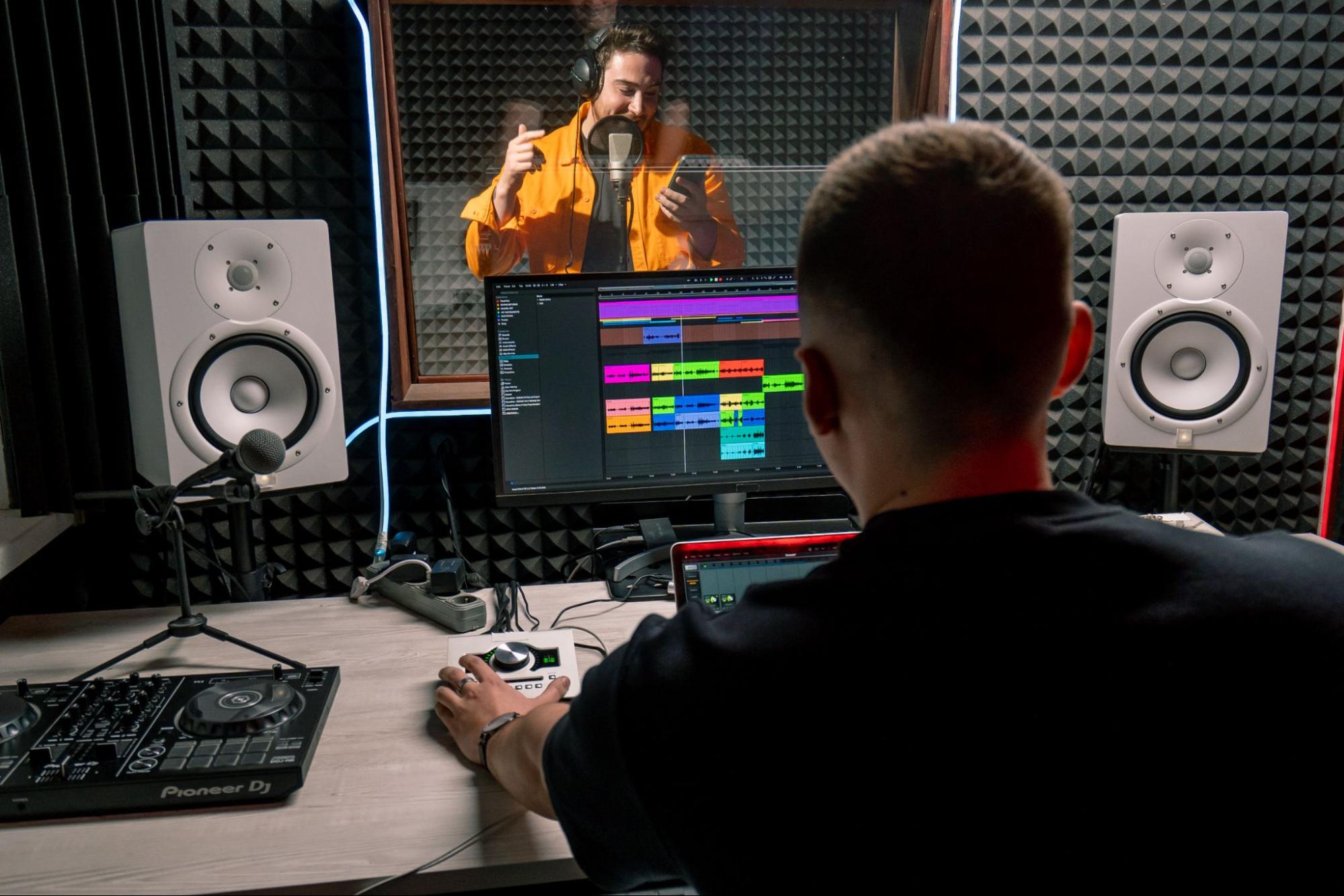In the world of audio production, choosing the right monitors is essential. Nearfield and midfield monitors, each distinct in functionality, are crucial for optimal sound quality. Nearfield monitors are valued for precision and favored in various settings, from home studios to specific professional applications, especially where detail-oriented work is required. Conversely, midfield monitors cater to more spacious locations, delivering an extensive sound field.
This guide provides insights and recommendations for music producers, recording engineers, and home studio enthusiasts. Continue for a deeper understanding of these monitors and assistance in choosing the right type for you.
Understanding Nearfield Monitors
Nearfield monitors, essential for in-depth sound examination, are a staple in most studios. Positioned close to the listener, these studio monitors minimize the impact of room acoustics, which is especially beneficial in untreated or smaller spaces. Consider these reasons for choosing nearfield monitors:
Accuracy in Various Environments
Nearfield monitors accurately represent sound irrespective of room size and shape. They aim to deliver a flat frequency response, which helps in achieving a more consistent sound across different playback systems.
Enhanced Sound Clarity
These monitors reveal the finer details in music, from subtle nuances in vocals to intricate layers in instrumentation. This sharpness is vital for meticulous listening and making precise adjustments in mixing.
Reduced Room Reflections
Nearfield monitors significantly reduce the impact of room acoustics by focusing on direct sound. This aspect is particularly advantageous in less-than-ideal mixing environments.
Ideal for Small Spaces
Their compact size makes them perfect for home studios and smaller professional setups. You can achieve professional-quality sound without needing an ample, acoustically treated space.
However, nearfield monitors have their limitations, such as:
- Limited bass response
- The smaller listening sweet spot
- Potential for ear fatigue during prolonged listening sessions
Nearfield monitors excel in home studios, project studios, and small professional environments where close-range monitoring is essential. Their ability to reveal subtle details makes them ideal for critical listening tasks in music production, audio editing, and mixing, where precision is vital.
Understanding Midfield Monitors
Midfield monitors serve as a midpoint between nearfield monitors and large main monitors. Designed for medium-sized studios, they balance detailed sound and room-filling capability. Their key attributes include:

Robust Bass Response
Midfield monitors typically have larger drivers, enabling them to reproduce deeper and more powerful bass frequencies. They’re suitable for genres heavily reliant on low-end frequencies.
Broader Listening Area
The sweet spot, or the optimal listening position, is larger for midfield monitors. You’ll have more flexibility in movement without compromising sound quality, which is beneficial in collaborative studio settings.
Fills Larger Rooms
Midfield monitors are designed to project sound across larger spaces, aiming for consistent audio quality, which can be influenced by room shape and acoustic treatment. This feature makes them suitable for spacious studios where sound needs to reach further without losing clarity or balance.
Better Environmental Translation
These monitors strive to provide a realistic portrayal of how audio might sound in various listening environments, from home audio systems to public venues. This feature benefits producers and engineers by creating mixes that translate effectively across different playback scenarios.
Though, like nearfield counterparts, midfield monitors come with their own set of challenges:
- Larger size and higher cost
- Requirements for a larger, acoustically treated studio space
- Potential for room reflections and interference in untreated rooms
Midfield monitors are most effective in medium to large-sized studios with acoustic treatment. They’re preferred for professional and upscale home recording studios requiring an extensive sound field. Excelling in delivering uniform sound over longer distances, they’re well-suited for mixing and mastering bass-heavy and dynamic genres like electronic, hip-hop, and film music.
Comparing Nearfield And Midfield Monitors
When you compare nearfield and midfield monitors, sound quality and environment suitability come into play. Nearfield monitors excel in smaller, untreated spaces, offering precision and detail crucial for intricate mixing tasks. In contrast, midfield monitors are tailored for larger, acoustically treated rooms, providing an expansive soundstage and robust low-frequency response.
Frequency response and dynamic range are also pivotal in this comparison. Nearfield monitors typically offer a more balanced frequency response, ideal for accurate sound reproduction. Meanwhile, with their extended dynamic range, midfield monitors are better suited for environments requiring a fuller and more powerful sound. Understanding this distinction is crucial to tailoring your studio setup effectively.

Choosing The Right Monitor For Your Needs
Nearfield and midfield monitors each have their perks. But your studio may benefit more from one than the other. Your decision between the two options should consider:
Studio Size and Acoustics
Consider the size of your studio and its acoustic properties. Nearfield monitors are more forgiving in smaller, less-treated spaces, while midfield monitors require a larger, acoustically treated environment to perform at their best. It also helps to measure the speaker size of the monitor you wish to get.
Primary Listening Distance
Think about how far you’ll be from the monitors. If you’re working in a confined space, nearfield monitors are more appropriate. Midfield monitors are more suitable for larger studios where you can maintain a greater distance.
Type of Music Being Produced
Your genre of music can influence your choice. If your work relies heavily on bass, midfield monitors might serve you better. For more detailed, high-frequency work, nearfield monitors could be more beneficial.
Personal Preferences and Budget
Your choice also depends on personal taste and how much you’re willing to invest. Nearfield monitors can be more budget-friendly, while midfield monitors are generally a more significant investment.
By carefully weighing these considerations, you can make an informed decision that meets your studio requirements and personal preferences.
Conclusion
Deciding between nearfield and midfield monitors involves understanding their distinct characteristics and assessing your needs. Reflect on your studio space, the music you work with, and your personal preferences. Whether you lean towards the intimate detail of nearfield monitors or the expansive sound of midfield monitors, your choice will significantly impact the quality of your audio production.


